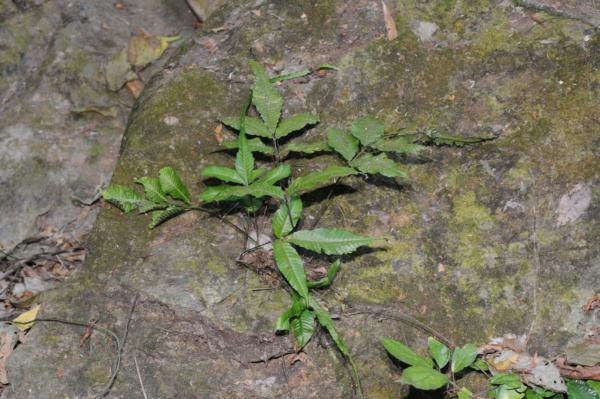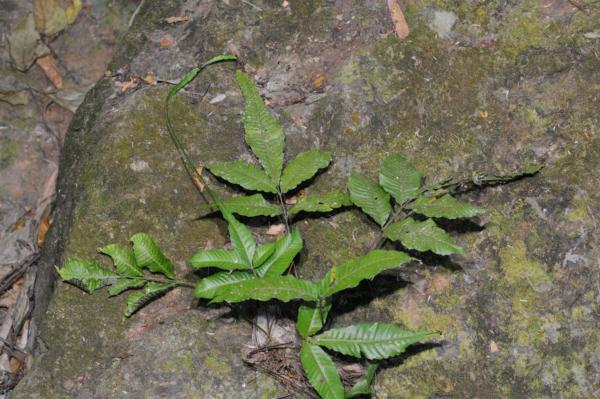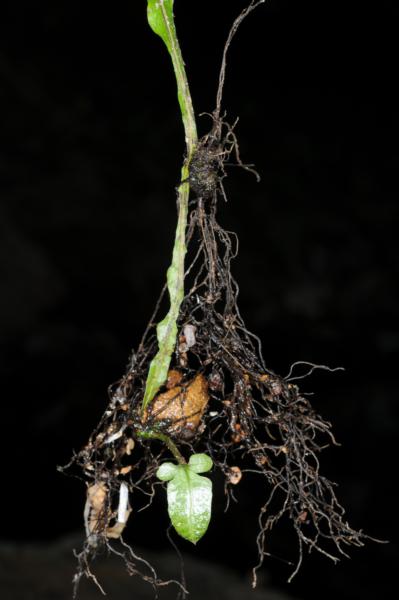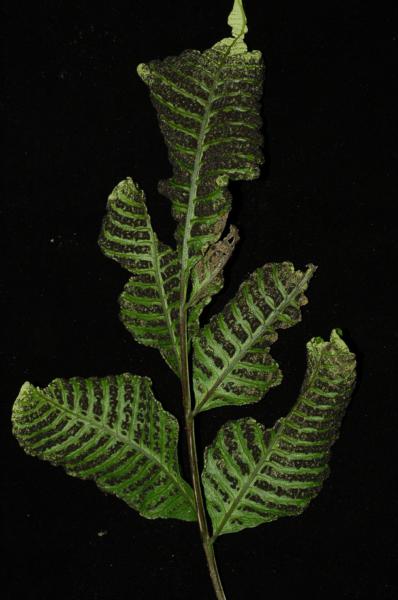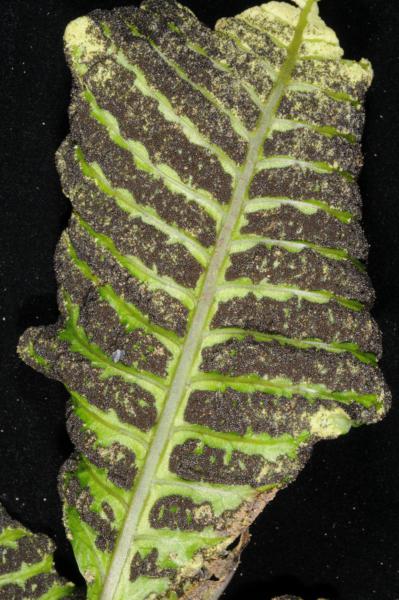
Bolbitis heteroclita (C.Presl) Ching ex C.Chr.
Family
Dryopteridaceae
Nomenclature
Bolbitis heteroclita (C.Presl) Ching ex C.Chr., Index Filic. Suppl. III.: 48. 1934; Tardieu & C.Chr., Fl. Indo-Chine 7(2): 434. 1941; Holttum, Rev. Fl. Malaya ed. 1, 2: 462, f. 271. 1955 [‘1954’]; Holttum, Dansk Bot. Ark. 20: 30. 1961; Holttum, Dansk Bot. Ark 23: 237. 1965; Tagawa & K.Iwats., SouthE. Asian Stud. 3(3): 85. 1965; Tagawa & K.Iwats., SouthE. Asian Stud. 5: 91. 1967; Hennipman, Leiden Bot. Ser. 2: 221, f. 60. 1977; Holttum, Fl. Males., Ser. II, Pterid. 1: 325, f. 25d & 31a–g. 1978; Tagawa & K.Iwats., Fl. Thailand 3: 320. 1988; Boonkerd & Pollawatn, Pterid. Thailand: 150. 2000; Boonkerd & Pollawatn, Pterid. Thailand: 183. 2000. – Acrostichum heteroclitum C.Presl, Reliq. Haenk. 1: 15, pl. 2, f. 2. 1825. – Leptochilus heteroclitus (C.Presl) C.Chr., Index Filic.: 385. 1906; C.Chr., Bot. Tidssk, 32: 343. 1916.
Description
Terrestrial, lithophytic or rarely epiphytic. Rhizome long creeping, scaly; scales nearly black with narrow brown ferrugineous margin, linear, up to 5 by 1 mm. Sterile frond: stipe 10–30 cm long, stramineous; lamina simple or imparipinnate with one or two pairs of lateral pinnae; lateral pinnae oblong, cuneate and shortly stalked at base, caudate at apex, 4–7 cm apart, 7–15 by 3–6 cm, almost entire or irregularly shallowly waved, terminal pinna oblong, or often very long-tailed with narrow linear tails 50–80 cm long, up to 15–20(–30) cm long excluding the tail, 5 cm broad; rachis narrowly winged, glabrescent; costa naked, sometimes viviparous; veins distinct on both surfaces, finely reticulated, without included free veinlets; herbaceous or softly papyraceous, glabrous, deep green, blackish when dry. Fertile frond: stipe nearly the same as or larger than those of sterile ones; lateral pinnae up to 4 pairs, oblong, about 5 by 2.7 cm, apical pinna a little larger than lateral ones, veins reticulate; sporangia spread over the whole undersurface of pinnae .
Distribution in Thailand
NORTHERN: Chiang Mai, Chiang Rai, Lampang, Phitsanulok; SOUTH-WESTERN: Kanchanaburi, Phetchaburi, Prachuap Khiri Khan; CENTRAL: Nakhon Nayok; SOUTH-EASTERN: Chachoengsao, Chon Buri, Chanthaburi, Trat; PENINSULAR: Nakhon Si Thammarat, Trang, Satun, Yala.
Wider Distribution
N India, Upper Burma, S and SW China, Taiwan, Ryukyu, Indochina, throughout Malesia to New Guinea.
Ecology
On wet ground or on muddy moist rocks usually near streams in dense forests, or rarely epiphytic on base of tree trunks, at low or medium altitudes.
Proposed IUCN Conservation Assessment
Least Concern (LC). This species is widespread and not under any known threats.
Notes
Characteristic of this species is the presence of apical prolonged lobes. In the epiphytic condition no prolonged terminal pinnae are formed though they reach to 30 cm in length.
Voucher specimens - Thailand
Middleton et al. 4685, Chanthaburi, Khlong Khrue Wai Wildlife Sanctuary (E); Middleton et al. 4733, Chachoengsao, Ang Rue Nai Wildlife Sanctuary (E).
Habit
Habit to show elongated frond apex
Bulbil on elongated frond apex
Fertile frond
Old Sori
Site hosted by the Royal Botanic Garden Edinburgh. Content managed by Stuart Lindsay, Gardens by the Bay, Singapore and David Middleton, Singapore Botanic Gardens. Last updated 24 January 2012
